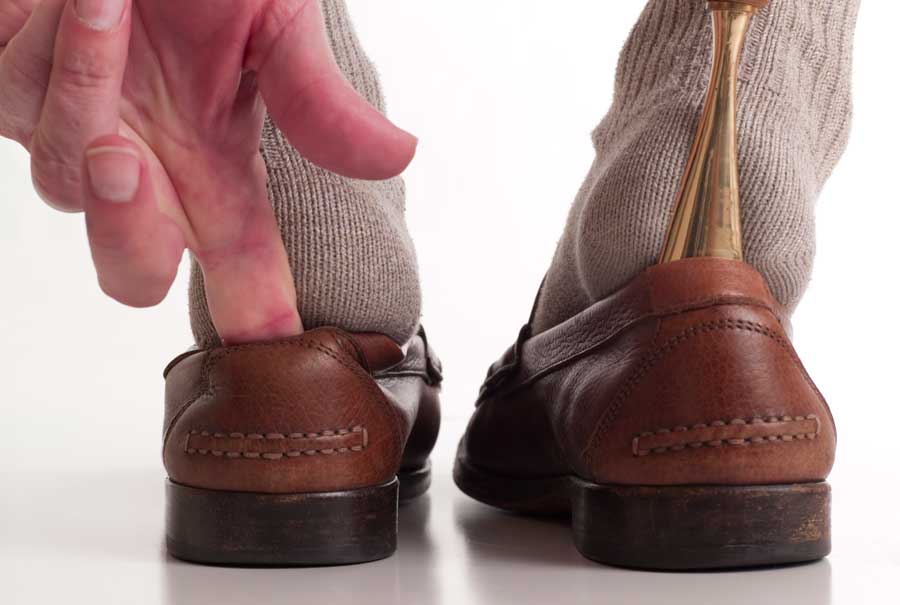As an occupational therapist who works with seniors in the community, I spend a lot of time educating my clients about fall prevention. This is a topic that comes up time and time again, with one of the most important recommendations focusing on wearing good footwear. Wearing good footwear at all times can help reduce the risk of falls in a big way! So, what are the most important elements to look for in a shoe?
Sole
Let’s start with the bottom of the shoe, the sole. It is important that the sole be made of a non-skid material, which will reduce the likelihood of slipping. Also, the base of the shoe should be wide, and flat (and yes, that means that heels should be avoided).
Heel support
If we work our way up the shoe, it is also important to have firm heel support. This offers the foot increased stability when walking and decreases the chances of the foot accidentally slipping out of the shoe.
Fastening
Another consideration is how the shoe is secured to the foot: whether it is with laces, or Velcro, or straps, it is important that the shoe be secured tightly enough to avoid the foot flopping out when walking, as well as to provide support, but not too tightly, as that can lead to other problems.
Comfort
Last, but not least, make sure that the shoe is comfortable! No two feet are the same so try on different shoes and select the ones that best fit your foot. Orthotics of any kind should be worn as prescribed, and consideration should be given to personal foot characteristics such as arch type or foot alignment.
Finding the right shoes is not always an easy feat
A lot of my clients tell me that they have purchased many different shoes, but none of the commercially available shoes are comfortable for them. If there is a reason that you cannot wear a “standard” shoe that is sold in a regular store (due to a deformity or having to wear a bandage, for example), several medical supply stores carry adapted footwear, and some can even make custom shoes to meet your needs!
Getting them on is a common problem
Another issue that my clients frequently report is the difficulty of putting the footwear on their feet. Many will get around this problem by wearing inadequate shoes or slippers, which are easier to put on, but create an increased risk for falls. Simple adaptive equipment such as a sock aid can make putting on socks easier, and a long handled shoe horn can make putting on shoes easier. These items can be purchased at many medical supplies stores, or even at local pharmacies.
Often, the act of tying laces can present a challenge to my clients, so I recommend elastic laces, or Velcro, both of which are easier to manipulate. Elastic laces give lace up shoes the same slip on convenience of loafers or slippers by allowing sufficient stretch to slip on and off with ease. If you want to adjust the tightness of the shoe then Velcro closures provide more control.
And what about other types of shoes?
Well, slippers are no different! Make sure that they meet the same criteria as shoes. This is especially important for older adults who spend a lot of time inside their homes.
For outings during the cold winter months, good winter boots are essential! Winter boots should have good treads to optimize their grip on snow and ice. Different designs and materials for treads are available on the market, and a sales representative in a reputable shoe store should be able to assist you in making your selection.
Lastly, you might be wondering, what about no shoes? Socks should be avoided as they create a greater risk of slipping, however walking barefoot should be minimized as well, as it can cause posterior unbalance. Good footwear should be worn as often as possible!
Hopefully these tips will help you in making your footwear selection. Walk safely everybody!




 and get Cash rewards!
and get Cash rewards!